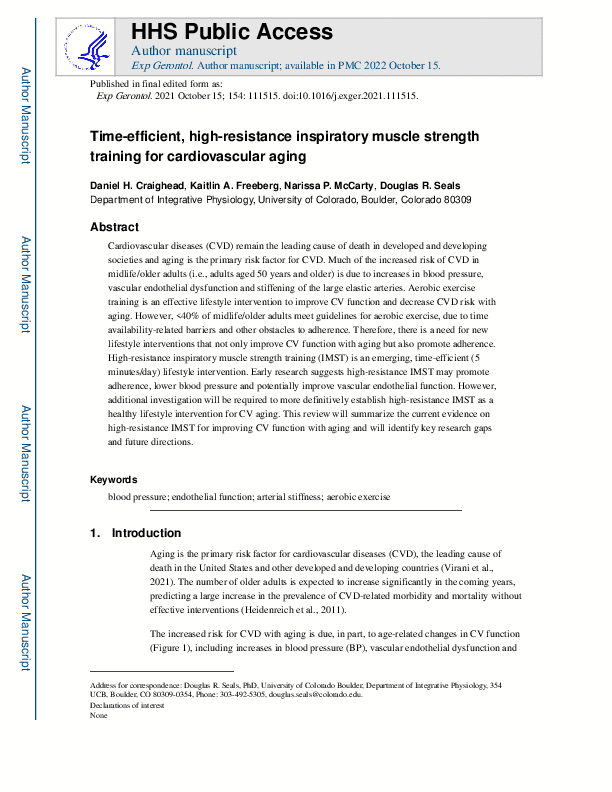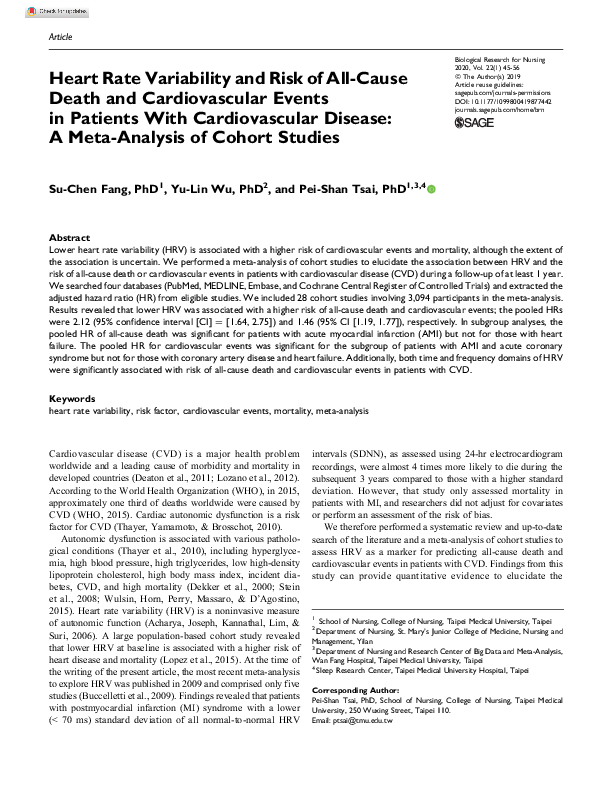
Breath and Health: An Ancient Yoga Secret Rediscovered
The connection between breathing and life force (Prāṇa) is deeply embedded in yoga philosophy. Śītalī Prāṇāyama", a breathing technique from traditional Haṭha Yoga, is described in the foundational texts as cooling and calming. But what if the yogis' wisdom could align with the outcomes of modern science?
Recent studies on Inspiratory Resistance Training (IRT) reveal that focused breathwork might offer more than just a calming effect – it could be a key to enhancing heart health and improving autonomic regulation.
Fundamentals of Inspiratory Resistance Training (IRT)
Inspiratory Muscle Training (IRT) is a type of breathwork where inhalation is performed against resistance.
This can be achieved using specialized breathing devices, such as a respiratory muscle training device that provides adjustable resistance to increase breathing effort. Alternatively, resistance can be created using special mouthpieces or valves that restrict airflow during inhalation.
Typically, there is a distinction between low resistance "Low Inspiratory Resistance Training (lIRT)" and high resistance "High Inspiratory Resistance Training (hIRT)." Both appear to have similar effects. However, hIRT achieves these with less training effort [Craighead 2021].
Effects of Inspiratory Resistance Training (IRT) on the Musculoskeletal System and Heart Function
IRT constitutes targeted strength training for the respiratory muscles needed for inhalation, which are part of the helical muscle-fascia system. Thus, this type of breath training has a positive impact on maintaining a healthy spine.
However, IRT is much more than just respiratory strength training. Inhalation against resistance creates a negative pressure in the chest cavity, which in turn promotes the return flow of blood to the heart. Due to the increased influx of blood, the heart beats faster on one hand, and on the other, it pumps more blood with each contraction (increased ejection fraction), based on a principle called the Frank-Starling mechanism.
The "Frank-Starling mechanism" principle states that heart contraction is stronger when the cardiac muscle cells are more stretched before contraction. The increase in preload stretches the ventricular myocytes, moving them closer to their optimal length for maximum contraction force. This leads to an increased ejection fraction and enhanced pumping performance of the heart [Chaui-Berlinck 2017].
Effects of Inspiratory Resistance Training (IRT) on Heart Rate Variability and Autonomic Regulation
During inhalation, not only does the ejection fraction increase due to this mechanism, but the heart rate does as well. Conversely, the heart rate slows down again during exhalation. As a result, there is a consequent increase in heart rate variability (HRV).
"Heart Rate Variability (HRV)" refers to the natural fluctuations in the time intervals between consecutive heartbeats.
HRV is a measure of the heart's adaptability to external and internal stimuli. A high HRV indicates a healthy, flexible cardiovascular system, while a low HRV may be associated with stress, fatigue, or even an increased risk for heart diseases, as shown in a meta-analysis of cohort studies [Fang 2020].
HRV is also an important indicator of the balance and interplay between the sympathetic (activating) and parasympathetic (calming) parts of the autonomic nervous system [Gullet 2023].
It is not surprising that heart function and heart rate variability are enhanced during IRT. Yet, this positive effect continues beyond the actual training period [Laoutaris 2008].
The improved heart function and autonomic regulation have positive effects on the entire body: High blood pressure can normalize, and resting heart rate can optimize, further supporting long-term heart health. Additionally, vascular reactivity improves, meaning that blood vessels can better respond to changes in blood flow and blood pressure.
Recent Study: Exploring the Connection Between IRT, HRV, and Heart Function
A recent study titled "Time-efficient, high-resistance inspiratory muscle strength training for cardiovascular aging" was conducted at the Institute of Exercise and Health Sciences at the University of Basel in Switzerland [Freeberg 2023]. The study included a total of 37 participants, divided into an intervention group (IG) of 19 participants and a control group (CG) of 18 participants.
The IG engaged in a training regimen consisting of 30 inspiratory breaths at 75% of their maximum inspiratory pressure capacity (PI max), conducted five days a week. The control group did not perform any specific breathing exercises and was not provided with a substitute program. The study spanned 12 weeks.
The researchers analyzed the effects of IRT on HRV and heart function before, during, and after the training period, focusing particularly on factors such as Ejection Fraction and Heart Rate Variability as indicators of autonomic heart regulation.
The study found that Inspiratory Resistance Training (IRT) over a period of 12 weeks led to significant improvements in heart function, autonomic heart regulation, and vascular reactivity. The intervention group, which performed IRT, exhibited increased Heart Rate Variability (HRV), improved Ejection Fraction, and enhanced vascular reactivity compared to the control group. These findings suggest that IRT could be an effective training modality to promote cardiovascular health, positively impacting various aspects of heart function and vascular health.
The Connection to the Ancient Yoga Breathing Technique Śītalī"
The Haṭha Yoga texts are full of wisdom about the connection between breath and life force. One such technique, Śītalī Prāṇāyāma", describes a breathing method where air is inhaled through a rolled tongue, said to have a cooling and calming effect. A drop in blood pressure subjectively feels like cooling, and mental calmness is a sign of improved autonomic balance.
Remarkably, scientific findings show that Inspiratory Resistance Training (IRT) has these exact effects: it lowers blood pressure and enhances autonomic balance.
It stands to reason that the traditional Śītalī Prāṇāyāma" and modern IRT might share the same mechanism of action. To align with modern studies, we can now practice Śītalī Prāṇāyāma" with a slightly different focus:
1. Instead of just loosely rolling the tongue lengthwise and hoping for cooling as the air passes over the moist tongue – akin to a dog panting. We can create significant resistance during inhalation with the rolled tongue. Those unable to roll their tongues can generate this resistance by pursing the lips as if to whistle and inhaling against the resistance created by the lips.
2. If we aim to train the strength of the inhalation muscles and want to create a negative pressure in the chest during inhalation, then the inhalation should be as deep as possible. The retention phase, described but not specified in the source texts of Haṭha Yoga, can be brief.
Inspiratory Resistance Training and traditional yoga breathing techniques like Śītalī Prāṇāyāma" may seem different at first glance, but both appear to be based on the same principle of action. By combining the wisdom of ancient traditions with modern science, we can gain a new understanding of old techniques, allowing us to target our practice more effectively. In this way, we find a holistic approach to health that nourishes the body, mind, and soul equally.
Photo: Nela König - https://www.nelakoenig.com/
Article (edited version): YogaWorld - https://yogaworld.de/
Literature
Chaui-Berlinck JG, Monteiro LHA. Frank-Starling mechanism and short-term adjustment of cardiac flow. J Exp Biol. 2017 Dec 1;220(Pt 23):4391-4398. doi: 10.1242/jeb.167106. Epub 2017 Sep 14. PMID: 28912258. https://pubmed.ncbi.nlm.nih.gov/28912258/
Craighead DH, Freeberg KA, McCarty NP, Seals DR. Time-efficient, high-resistance inspiratory muscle strength training for cardiovascular aging. Exp Gerontol. 2021 Oct 15;154:111515. doi: 10.1016/j.exger.2021.111515. Epub 2021 Aug 10. PMID: 34389471; PMCID: PMC9150656. https://pubmed.ncbi.nlm.nih.gov/34389471/
Fang SC, Wu YL, Tsai PS. Heart Rate Variability and Risk of All-Cause Death and Cardiovascular Events in Patients With Cardiovascular Disease: A Meta-Analysis of Cohort Studies. Biol Res Nurs. 2020 Jan;22(1):45-56. doi: 10.1177/1099800419877442. Epub 2019 Sep 26. Erratum in: Biol Res Nurs. 2020 Jul;22(3):423-425. PMID: 31558032. https://pubmed.ncbi.nlm.nih.gov/31558032/
Freeberg KA, Craighead DH, Heinbockel TC, Rossman MJ, Jackman RA, Jankowski LR, Ludwig KR, Chonchol M, Bailey EF, Seals DR. Time-efficient, high-resistance inspiratory muscle strength training increases cerebrovascular reactivity in midlife and older adults. Am J Physiol Heart Circ Physiol. 2023 Nov 1;325(5):H1059-H1068. doi: 10.1152/ajpheart.00351.2023. Epub 2023 Sep 8. PMID: 37682232. https://pubmed.ncbi.nlm.nih.gov/37682232/
Gullett N, Zajkowska Z, Walsh A, Harper R, Mondelli V. Heart rate variability (HRV) as a way to understand associations between the autonomic nervous system (ANS) and affective states: A critical review of the literature. Int J Psychophysiol. 2023 Oct;192:35-42. doi: 10.1016/j.ijpsycho.2023.08.001. Epub 2023 Aug 3. PMID: 37543289. https://pubmed.ncbi.nlm.nih.gov/37543289/
Laoutaris ID, Dritsas A, Brown MD, Manginas A, Kallistratos MS, Chaidaroglou A, Degiannis D, Alivizatos PA, Cokkinos DV. Effects of inspiratory muscle training on autonomic activity, endothelial vasodilator function, and N-terminal pro-brain natriuretic peptide levels in chronic heart failure. J Cardiopulm Rehabil Prev. 2008 Mar-Apr;28(2):99-106. doi: 10.1097/01.HCR.0000314203.09676.b9. PMID: 18360185. https://pubmed.ncbi.nlm.nih.gov/18360185/
-

Matthias Harzheim
at 18.03.2025Eigenartig, wie altes Wissen durch aktuellste Erkenntnisse bestätigt wird. Vielen Dank, Ronald, dass Du mit dieser scharfsinningen Analyse, das Yoga wieder einmal aus der esoterischen Ecke bewegt [...] Eigenartig, wie altes Wissen durch aktuellste Erkenntnisse bestätigt wird. Vielen Dank, Ronald, dass Du mit dieser scharfsinningen Analyse, das Yoga wieder einmal aus der esoterischen Ecke bewegt hast!!
-
Danke. Danke.
-
-
Wunderbar erklärt, ich übe inzwischen regelmäßig Sitali, auch mit meinen Yogaschülerinnen und -schülern. Es beruhigt mich. Wunderbar erklärt, ich übe inzwischen regelmäßig Sitali, auch mit meinen Yogaschülerinnen und -schülern. Es beruhigt mich.
-
Danke. Freue mich. Danke. Freue mich.
-



 Dr. Ronald Steiner
Dr. Ronald Steiner






Messages and ratings